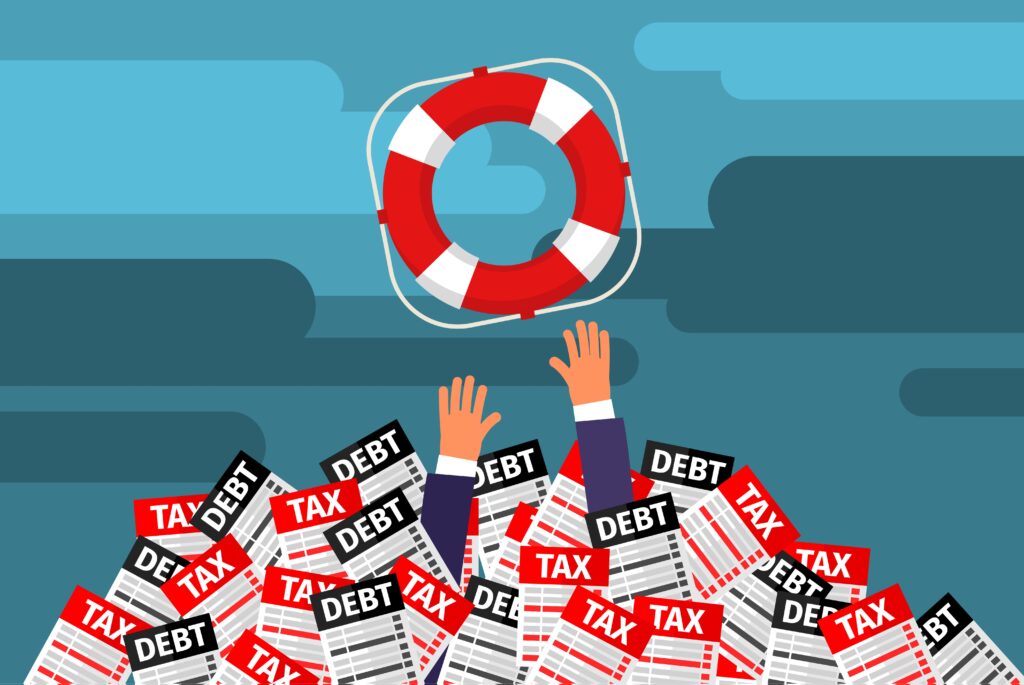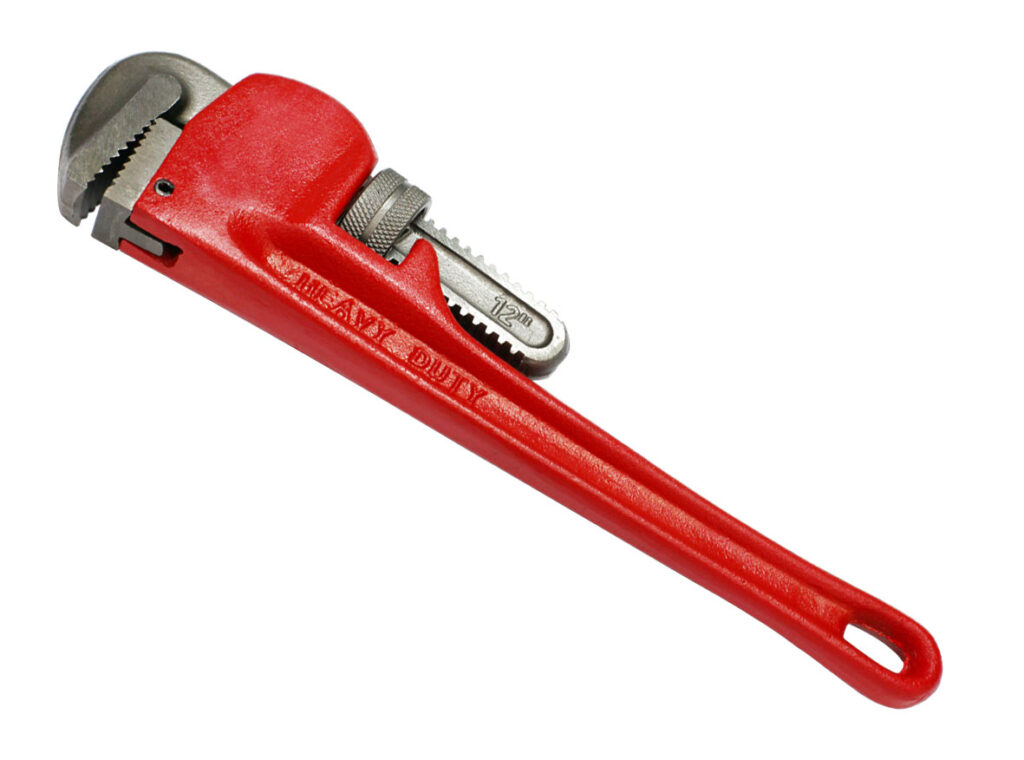Latest Posts
What To Expect During Your First Meeting With a Lawyer
Engaging with legal counsel, especially when facing a challenging situation, can be both daunting and crucial. Whether you’re dealing with a personal injury claim or another legal matter, your first meeting with a lawyer sets the stage for what follows. For those seeking guidance in Calgary, finding the Best Personal Injury Lawyer Calgary is a critical first step towards resolving legal issues effectively.
Initial Consultation: Setting the Foundation
The initial consultation serves as an essential foundation for your legal journey. This meeting allows you to introduce yourself and your case to the lawyer. Bringing any relevant documents, such as medical records, contracts, or correspondence related to your case is beneficial. Be prepared to discuss the specifics of your situation openly and honestly.

Evaluation of Your Case: Understanding Feasibility
During the first meeting, the lawyer will likely ask detailed questions to grasp the nuances of your case fully. This evaluation helps them determine the feasibility of your legal matter and assess the potential outcomes. They may also outline the legal process ahead, including timelines, potential challenges, and the expected steps.
Legal Strategy: Crafting a Plan of Action
The lawyer will develop a tailored strategy based on the information you provide. This plan outlines how they intend to approach your case, highlighting key legal arguments, possible defenses, or negotiation tactics. Understanding this strategy gives you clarity on what to expect moving forward and how the lawyer plans to advocate on your behalf.
Discussion of Fees and Costs: Transparency in Financial Matters
During your initial meeting, the lawyer will discuss their fee structure and any anticipated costs associated with your case. Ask about billing practices, such as hourly rates, retainer fees, and expenses. Clear communication about financial matters ensures there are no surprises later in the legal process.
Client-Lawyer Relationship: Building Trust and Communication
Building a strong rapport with your lawyer is integral to a successful legal outcome. The first meeting provides an opportunity to gauge compatibility and communication styles. A trustworthy lawyer will listen attentively to your concerns, provide realistic expectations, and maintain open lines of communication throughout your case.
Next Steps: Implementing the Action Plan
By the end of your initial meeting, you should have a clear understanding of the next steps in your legal journey. This may include gathering additional evidence, drafting legal documents, or initiating negotiations. Your lawyer will outline your role in these steps and keep you informed as your case progresses.

Conclusion: Moving Forward with Confidence
Your first meeting with a lawyer sets the tone for how your legal matter will unfold. It’s a pivotal opportunity to align expectations, strategize effectively, and establish a collaborative relationship. With the guidance of the Best Personal Injury Lawyer Calgary, you can confidently navigate legal complexities, knowing you have expert support every step of the way.
Creative Ways To Use Round Custom Stickers For Business Promotion
In today’s competitive business landscape, finding unique and cost-effective ways to promote your brand is crucial. One often overlooked yet highly effective marketing tool is round custom stickers. These versatile little circles can be used creatively to enhance your business’s visibility and leave a lasting impression on your target audience. In this article, we’ll explore several innovative ways to make the most of round stickers custom for business promotion.
Branding on the Go
One of the simplest yet impactful ways to utilize round custom stickers is by turning your business vehicles into rolling advertisements. Apply your brand logo and contact information to your company vehicles’ doors, windows, or bumpers. This reinforces your brand identity and serves as a mobile marketing tool that reaches potential customers as you go about your daily operations.

Packaging Enhancement
Enhance your product packaging with round custom stickers. Add them to the front of your product boxes or envelopes to create a visually appealing and professional look. You can use these stickers to display your logo, product information, or special promotions, making your packages more appealing to customers and increasing brand recognition.
Event Swag and Merchandise
If your business participates in trade shows, conferences, or community events, round custom stickers can be a great addition to your swag and merchandise. Design eye-catching stickers that reflect your brand and hand them out to event attendees. People love freebies, and a well-designed sticker can find its way onto laptops, water bottles, and more, effectively promoting your business beyond the event itself.
Incorporate into Your Marketing Collateral
Make your marketing materials stand out by incorporating round custom stickers into your brochures, flyers, and business cards. Placing a sticker on your marketing collateral can pique the interest of your target audience and encourage them to take a closer look. It’s a small detail that can make a big impact.
Personalize Customer Orders
Show your customers that you care by personalizing their orders with round custom stickers. Whether you run an e-commerce store or a brick-and-mortar business, adding a thank-you sticker to packages or receipts can create a positive and memorable customer experience. You can even use stickers to seal envelopes or bags, adding an extra layer of branding to every transaction.
Interactive Promotions
Engage your audience with interactive promotions using round custom stickers. Create sticker sheets with different elements that customers can collect and share on social media. Please encourage them to tag your business and use a specific hashtag for a chance to win prizes or discounts. This increases brand visibility and fosters a sense of community around your products or services.
Window Displays
Transform your storefront or office windows into captivating displays with round custom stickers. These stickers can be easily removed without residue, making them perfect for temporary promotions or seasonal decorations. Use them to highlight special offers, showcase new products, or add a festive touch during holidays.

In conclusion, round custom stickers are a versatile and cost-effective tool for promoting your business. From branding on the go to enhancing your packaging and engaging with your audience, there are countless creative ways to use these stickers to boost your brand’s visibility and leave a lasting impression. So, take into account the power of these small, circular marketing wonders in your business promotion strategy.
Enhancing Customer Engagement with Vertical Digital Signage Display
As the world is increasingly becoming more digitally oriented, businesses are turning to digital signage displays as a way to boost their customer engagement. By utilizing vertical digital signage display frames, companies can create dynamic and visually appealing content that will capture customers’ attention and encourage them to interact with their brand. The use of digital signage frame provides businesses a great opportunity to boost customer engagement by providing an engaging experience that can be tailored according to the needs of their target audience.
What is Vertical Digital Signage Display?
Vertical digital signage displays are large LCD or LED screens designed to showcase dynamic content in either portrait or landscape orientation. Unlike traditional television displays, they offer superior picture quality and wider viewing angles while also being much more energy-efficient. Furthermore, they feature flexible mounting options which allow them to be mounted on walls or ceilings for maximum visibility. With the right software and hardware setup, these displays can be used to show interactive content, such as videos and graphics, which can help engage customers in an immersive environment.

Advantages of Using Vertical Digital Signage Displays
Many advantages are associated with using vertical digital signage displays for engaging customers. First and foremost, they provide businesses with an effective way of showcasing their products or services in a visually appealing manner without having to invest heavily in conventional advertising methods. Additionally, they allow businesses to customize the type of content displayed depending on its target audience, which helps ensure that it resonates with viewers more effectively than one-size-fits-all approaches used by traditional advertising methods. Moreover, these displays come equipped with advanced features like motion sensors, which enable them to detect when someone is standing directly in front of them to adjust the displayed content accordingly, thus creating an even more engaging experience for viewers.
Create high impact content
For businesses looking to use vertical digital signage display frames to maximise customer engagement, creating high-impact content is essential. Businesses should focus on creating content that is relevant, informative and entertaining at the same time, as this will help to keep viewers engaged throughout the duration of the viewing experience, while also increasing brand awareness amongst potential customers. What’s more, incorporating interactive elements such as polls and surveys into the content will further engage viewers by allowing them to actively participate rather than just passively watch what’s on screen, making it easier for companies to achieve the desired results from their campaigns.
Maximising visibility
In order for vertical digital signage display frames to have a meaningful impact on customer engagement, it’s important that they are strategically placed where potential customers can easily see them without being obstructed by other objects such as furniture, plants and so on. In addition, adjusting brightness levels to suit different times of the day (e.g. reducing brightness as darkness falls) can also help to attract longer viewing times, thereby increasing exposure to potential customers.
Analyse the results
Last but not least, analysing the effectiveness of your company’s digital signage campaign is crucial to assessing whether it has achieved its objectives. This process involves gathering data on how many people interacted with the display (i.e. clicked on it), how long they spent viewing it, what type of content they were most interested in, and so on. With this information in hand, companies can then make adjustments to their future campaigns based on how successful their current campaign was in achieving these goals.

Bottom line
Vertical digital signage displays offer businesses an excellent opportunity to improve customer engagement through dynamic visual presentations tailored to their specific needs and target audiences. However, if these displays are to be most effective in achieving their purpose, it is imperative that businesses pay close attention to the type of content they create, including where the display is located, to ensure that the campaign achieves the desired objective.
8 Financial Planning Tips For Condo Owners: How to Budget and Save Wisely
Owning a condo can be expensive, from the initial purchase to ongoing maintenance costs. For this reason, condo owners need to plan their finances carefully and budget wisely. To help you, we’ve put together 8 financial planning tips for condo owners that will help you save money while enjoying your home. Additionally, staying informed about cost-effective maintenance practices can make a significant difference in the long run. For more insights and resources on managing condo expenses, you can also explore helpful information at https://lentoriacondo.com.sg, which offers valuable tips tailored to condo owners looking to optimize their financial strategies.
1. Set Your Priorities
When it comes to managing your finances as a condo owner, the first step is to set your priorities. This means knowing what obligations and expenses are essential and must be taken care of first. Essential expenses such as mortgage payments should come before non-essential purchases like new furniture or electronics. Knowing which items are most important allows you to stay organized and on top of your financial responsibilities without overspending or getting behind on bills.

2. Create a Budget
Once you have identified what expenses are necessary, create a budget that outlines all of your income sources and planned expenditures each month to keep track of where your money is going and when bills need to be paid. Be sure to include both fixed costs (mortgage payments) and variable costs (utilities) in order to get an accurate picture of how much money is coming in versus going out every month.
3. Consider Savings Options
Making regular contributions into savings accounts can help build up an emergency fund or long-term investments that may come in handy if unexpected expenses arise or if there is ever a need for extra cash flow during retirement years. Many banks offer various savings accounts with different interest rates tailored specifically towards condo owners, so do some research online or speak with local banks about their options before deciding which one works best for you financially.
4. Take Advantage of Tax Benefits
As a condominium owner, there are certain tax benefits that could potentially help reduce some of the monthly costs associated with owning a property, such as mortgage interest deductions or property tax exemptions, depending on where you live. Before you file your taxes each year, check with your local government or consult an accountant about potential tax breaks that could save you thousands in taxes each year – just make sure all the paperwork is gathered in advance to maximize these benefits wherever possible!
5. Get home insurance & maintenance plans
Home insurance is not only important to protect your investment, but is also required by many lenders when purchasing apartments/homes, especially those close to water as they are at higher risk of flooding than other properties further inland. Research different policies available from different providers to compare prices/coverage levels before making any decisions – this could potentially save you hundreds each year by choosing cover that meets your needs without breaking the bank! Additionally, consider investing in maintenance plans offered by companies specializing in condominium maintenance services; these plans cover repairs related to HVAC systems, plumbing issues etc., thus helping to prevent costly emergencies down the line due to proactive preventative measures taken now instead of later!
6. Shop around & compare prices
Before making any major purchases related to condos, such as appliances, furniture etc., take time to shop around, and compare prices at several stores to find the best deals available in town – doing so could result in substantial savings over the course of a few months if shopping habits remain consistent across the board! It’s also a good idea to equip places with energy-efficient products to reduce utility bills throughout the duration of ownership; LED light bulbs, for example, often last longer, and use less electricity than traditional incandescent counterparts, thus saving more money in the long run, given the fact they require replacement less frequently than latter type bulbs well.
7. Manage common area fees and charges carefully.
Condo complexes usually have monthly common area charges (elevator fees, garbage collection, etc.) associated with them, which must be taken into consideration while budgeting accordingly to manage funds effectively; additionally, being aware of all other fees, restrictions governing particular complexes, including pet rules, parking regulations, etc., will allow residents to anticipate future expenses and avoid surprises down the line! Keeping abreast of recent changes to current laws governing development may also prove helpful in the event that a situation arises requiring legal assistance in dealing with disputes between community members, and landlords alike, due to improper use of common facilities within the vicinity of the premises.

8. Monitor spending habits regularly
Finally, monitoring spending habits regularly will ensure you stay on top of your finances, avoiding unnecessary debts, last-minute bills, and late payment penalties, which eventually damage credit scores, affect your ability to obtain loans, purchase vehicles, homes, and further along your life’s journey! Keeping records of transactions both online and offline forms a great way to stay organised Even the simplest tasks like recording mileage travelled work commute tracking grocery store trips become easier possibly cheaper overtime depending type of lifestyle lead by the individual level basis.
Choosing the Right Bankruptcy Attorney for Your Small Business In San Diego
Finding expert bankruptcy legal advice in San Diego can be a difficult and stressful process. With so many attorneys offering bankruptcy services, it is important to do your research and find an attorney with experience handling small business cases. Here are some of the things you should consider when choosing a bankruptcy attorney for your small business:
1. Experience Level
When looking for a qualified attorney, check their background and experience level. Ask them questions about past experiences with similar cases, and if they have any specialized knowledge or certifications related to bankruptcy law. It’s also important to ensure that the attorney has experience in dealing with state-specific and federal laws associated with filing for bankruptcy.

2. Track Record Of Success
You want an attorney who can help you get back on track financially and give you peace of mind during this difficult time. Look into their track record of success in dealing with other clients’ bankruptcies, including how quickly they achieved desired outcomes. The more successful cases an attorney has handled, the better suited they may be for your situation.
3. Cost Effectiveness
Most attorneys charge by the hour so it’s important to understand what fees are involved when hiring an attorney before deciding which one is right for you. Make sure you know exactly what services they offer at each price point to determine if it’s cost-effective for your particular case. Additionally, inquire about payment options such as installment plans or discounts that could help reduce costs associated with legal services rendered.
4. Reputation And Reviews
It’s also beneficial to look into reviews from previous clients of the firm or lawyer you’re considering working with so you can gain insight into their professional reputation and customer service quality levels ahead of time. Online reviews from professional networks like Yelp or Avvo can provide valuable feedback from people who have worked directly with the lawyer or firm before deciding whether or not they would be the right fit for your needs.
5. Communication Style And Availability
In order to get the most out of your relationship with a lawyer, it is essential that lines of communication are open at every stage of the process – both verbally via telephone conversations and/or via email correspondence, depending on the preferences established by both parties at the initial meetings. Open communication allows lawyers to keep abreast of any new developments in the case and to keep clients informed at the same time. In addition, availability should also factor into the decision-making equation; lawyers must be accessible enough that clients feel comfortable contacting them at any time without fear that questions will go unanswered due to frequent unavailability.
6. Specialised services offered
Each client’s situation is unique and it is therefore necessary for lawyers to offer specialised services tailored to individual needs. This includes having access to resources in specific areas such as tax law, asset protection, debt management, etc., whilst having sufficient knowledge in these areas to be able to provide appropriate advice at each stage of the process.

7. Post-filing support
The job doesn’t end once the paperwork has been filed; post-filing support often takes precedence over the initial filing itself, and due diligence here means researching potential lawyers thoroughly enough in advance so as not to be surprised when unexpected issues arise later down the line. This is where expertise comes full circle, as companies require ongoing support after filing, especially those emerging from Chapter 11 reorganization, as they need ongoing monitoring of the debtor’s compliance procedures outlined therein, leading up to the eventual discharge of debt.
8. Referrals from other professionals
Finally, don’t forget to reach out to colleagues in the industry for referrals to trusted attorneys specializing in the field of bankruptcy, potentially helping to overcome current financial obstacles facing the company’s growth and future endeavors alike!
7 Steps To Protecting Your Privacy: How to Delete Your Account from Social Media Platforms
Are you concerned about protecting your privacy online? Whether it’s due to data collection or cyberbullying, many of us want a way to delete our accounts from social media platforms. But how to delete my account is not always a straightforward question. Different platforms have different policies and procedures for deleting accounts, and some may not even allow you to do so. In this article, we will guide you through the steps of deleting your accounts from some of the most popular social media platforms, such as Facebook, Twitter, Instagram, and more. Here are some easy steps to help you do just that.
1. Know the Terms of Service and Data Collection
Before you delete your account, it’s important to understand what kind of information the platform has collected about you and how long it will be stored. Most services have a “terms of service” page that outlines this information. You should also read any data collection policies so that you know what kind of data is collected and how the company uses it. This will help you make an informed decision about whether or not to delete your account.

2. Back up your data
Once you understand what kind of data is being collected, it’s important to back up any content or data associated with your account before deleting it. Depending on the platform, there may be different ways to back up this data, such as downloading photos, videos, or documents associated with the account. It may also be helpful to download all conversations to keep track of important details discussed over time.
3. Turning off two-factor authentication
If two-factor authentication is enabled on the account, you must disable this setting before deleting the profile, otherwise, access may still be available after deletion. If you don’t know how two-factor authentication works, or if your account has this feature enabled, contact customer service for assistance in disabling this setting before deleting.
4. Choose what data to keep
Most social media platforms allow users to choose what information they want to keep after their profile is deleted (for example, Instagram allows users 14 days after deactivation). This can include posts, photos, and other content associated with your name and identity on the platform, which may live on after the profile has been deleted unless explicitly stated otherwise during the deletion process. Make sure you take advantage of these options, where available, to further protect yourself when permanently removing an account from a platform.
5. Contact customer service if necessary
Some platforms require users to contact customer service to initiate the deletion process, while others allow self-service via settings menus (e.g. Twitter). If necessary, contact customer service through the means provided, such as an email address or toll-free phone number, and follow the agent’s instructions regarding the steps required for permanent removal/deletion. For added security, upon completion, the user may request a confirmation code sent to a secure email address to confirm successful removal/deletion.

6. Follow the process carefully
When initiating the removal/deletion process, carefully review each step along the way to ensure accuracy when providing requested personal information (i.e. full name, username, password, etc.), as well as reviewing previously selected preferences regarding desired retention/deletion status of existing content – ensure that any changes made previously are accurately reflected according to prior specifications. Failure to provide accurate input at each step could result in incomplete removal/partial deletion leaving remnants behind – potentially vulnerable exposure online, so double-check everything!
7. Understand that some information may remain online
Once removed/deleted, some digital traces may remain online under certain circumstances, particularly in cases where third-party websites directly link to cached versions, specific public profiles including copies, search engine results, archive sites, etc. In cases where direct links exist, removal/deletion should be attempted via the relevant source website, but there’s no guarantee that complete removal will occur, except possibly in cases where the individual personally contacts the owners and requests direct action. So although following the tips discussed above can help protect user privacy, there is no guarantee that every trace will be removed, but taking the extra precautions discussed here should make attempts more effective than ever before!
Led Poster for Advertising: How to Add and Change Media on Your Digital Poster
LED poster for advertising has revolutionized the way businesses promote their products and services. These digital posters have become popular due to their eye-catching graphics, versatility, and cost-effectiveness. As a business owner, it is essential to stay up-to-date with the latest advertising trends and technologies to keep your brand relevant. One of the most effective ways to do this is by using an LED poster for advertising. However, knowing how to manage the content on your poster can be challenging. In this article, we’ll walk you through the steps of adding and changing media on your LED digital poster.
Understanding Your LED Digital Poster
Before we dive into how to add and change media on your LED digital poster, it is essential to understand its features. An LED digital poster is a type of display screen that uses LED technology to display content such as images, videos, and text. The posters are available in different sizes, resolutions, and brightness levels. They are highly durable and can operate for long hours without any issues.

Adding and Changing Media on Your LED Digital Poster
Here are some simple steps that you can follow to add and change media on your LED digital poster:
Step 1: Choose the Right Software
The first step to adding and changing media on your LED digital poster is to choose the right software. Different software options are available in the market, but the most popular ones are Novastar, Linsn, and Colorlight. These software programs are user-friendly and offer a range of features to customize your LED digital poster.
Step 2: Connect Your LED Digital Poster to Your Computer
The next step is to connect your LED digital poster to your computer using a USB or HDMI cable. Once connected, you can open the software program and start customizing your content.
Step 3: Create Your Content
You need to create your content to add and change media on your LED digital poster. You can use a range of software tools such as Adobe Photoshop, Illustrator, and InDesign to create high-quality images and graphics. You can also use video editing software such as Adobe Premiere Pro or Final Cut Pro to create engaging videos.
Step 4: Import Your Content
After creating your content, you need to import it into your LED digital poster software. You can do this by clicking on the “Import” button and selecting the file you want to upload. The software will automatically optimize the content for your LED digital poster.
Step 5: Customize Your Content
Once you have imported your content, you can customize it according to your preferences. You can change your text’s font, size, color, and position. You can also add animations and transitions to your videos and images.

Step 6: Preview Your Content
Before finalizing your content, previewing it on your LED digital poster is essential. This will help you identify any issues and make necessary changes before displaying them to your audience.
Step 7: Publish Your Content
After previewing your content, you can publish it to your LED digital poster. You can do this by clicking on the “Publish” button and selecting the display screen you want to show your content on.
Conclusion
LED digital posters are a cost-effective and customizable solution for advertising your products and services. Following the simple steps outlined in this article, you can easily add and change media on your LED digital poster. With the right software and content, you can create engaging and visually appealing content that will attract customers to your business.
6 Steps To Choosing The Right Locksmith
There are a lot of things to consider when choosing a locksmith. You want to ensure that the locksmith is credible, has a good track record, and is affordable. You also want to make sure that the locksmith is available when you need them and can provide you with the services you need.
With so many things to consider, how do you choose the right locksmith?
1. Be Clear About the Locksmith Services You Need
There are many types of locksmith services, and not all locksmiths offer the same. A residential locksmith can help you with things like changing your locks, re-keying your home, or getting you into your house if you have locked yourself out.
Whereas a commercial locksmith can help you install new locks or security systems or get into your office if you have locked yourself out. Apart from these two, emergency locksmiths can come to your aid 24 hours a day, 7 days a week. Keeping all this in mind, before hiring anyone, ensure you know what you need and which type of locksmith is perfect for the job.

2. Find Out Who Can Provide the Service
When it comes to finding a Phoenix locksmith, it’s important to choose a reliable and experienced locksmith that can provide the services you need. Not all locksmiths are created equal, and some may not be able to provide the services you’re looking for.
First, consider what services you need. Do you need a locksmith for your home, business, or vehicle? Make sure to choose a locksmith specializing in the type of service you need. Next, check online reviews and see what others say about the services of that particular locksmith. This can help you narrow down your choices and find a reputable locksmith. Finally, you can get in touch with the locksmiths you finalize and ask more about pricing and availability. Be sure to get quotes from multiple locksmiths to compare prices and services.
3. Ask Which Locksmith Providers Are Covered
When it comes to finding a locksmith, it’s important to choose one that your insurance provider covers. Otherwise, you may be stuck with a bill for the full cost of the services. Ask your insurance agent or broker to find out which locksmith providers are covered. They should be able to provide you with a list of approved providers, and after that, you can start with the hiring process.
4. Get an Estimate for the Cost of Services
When you need the services of a locksmith, the final cost is an important factor to consider. You don’t want to overspend on a locksmith when you could have spent less on someone else. To get an estimate for the cost of services, you can contact a few different locksmiths in your area and ask for quotes.
When you compare the quotes, be sure to ask about any additional fees that may be included. Also, be sure to ask if the locksmith offers any discounts for seniors or military personnel. All this will give you an idea about the final cost associated with the work, and you can choose a professional with the cheapest and best service.
5. Request to See Credentials
When choosing a locksmith, be sure to see their credentials. A professional locksmith must have the proper licenses, insurance, or other relevant documentation. This will ensure that the locksmith is qualified to do the job, and you will be protected in case of any damages. An experienced locksmith will also be able to handle any unforeseen situation that may come up during the job and may save you a lot of time and money as well.
They will also be able to give you advice on what type of lock is best for your home or business. When requesting to see credentials, be sure to ask for references as well. A good locksmith will have no problem providing you with a list of satisfied customers. This will give you peace of mind knowing that you are dealing with a trustworthy and reliable professional.

6. Get an Invoice for the Locksmith Services
A good way to make sure you’re choosing the right locksmith is to get an invoice for the services. This will give you a breakdown of what the locksmith will be doing and how much it will cost. You can then request the locksmith to give you a discount and remove any unnecessary services that they might have included in the invoice.
What to Avoid When Hiring a Locksmith
When it comes to choosing a locksmith, there are a few things you’ll want to avoid. First, be sure to avoid any locksmiths who don’t have a physical address. This could mean they’re not reputable and could even be scammers. If possible, you can go through the locksmith’s website which is a good indicator of the service quality as well.
Second, avoid any locksmiths who give you a quote over the phone without seeing the job first. This is likely an estimate that’s much higher than what you’ll actually end up paying. Finally, avoid any locksmiths who require payment upfront before any work is done. A reputable locksmith will only request payment once the job is completed to your satisfaction.
Exploring 314159u: A Journey Through the World of Pi and Beyond
Pi, denoted by the Greek letter π, is not just a mathematical constant but a symbol of infinite possibilities and mysteries waiting to be unraveled. From ancient mathematicians to modern-day scientists, the quest to understand Pi has transcended disciplines, inspiring art, philosophy, and even technology. Join us as we embark on a journey through 314159u, delving into its significance, applications, and the intriguing world it opens up.
The Origin and Significance of Pi
Pi has fascinated scholars since antiquity, with early civilizations approximating its value for practical purposes like engineering and architecture. Its irrationality—the fact that its decimal representation goes on infinitely without repeating—has spurred mathematical inquiry and symbolizes the limitless nature of mathematical exploration.

Pi in Art and Culture
Beyond mathematics, Pi has influenced art and culture. From literature to music, Pi has been celebrated in creative expressions. The novel “Life of Pi” by Yann Martel and the hauntingly beautiful “Pi Symphony” by Michael Blake are just a few examples of how this enigmatic number has inspired artistic creations.
Applications in Science and Technology
In the realm of science and technology, Pi plays a crucial role. It appears in formulas governing the curvature of circles, the volume of spheres, and the oscillations of waves. Modern innovations in computing rely heavily on Pi, with calculations involving its digits pushing the boundaries of computational power and precision.
Pi Day: Celebrating a Mathematical Marvel
Every March 14th (3/14), mathematicians and enthusiasts around the globe celebrate Pi Day. Festivities include reciting digits of Pi, baking Pi-themed pies, and engaging in discussions about its profound impact on mathematics and beyond. Pi Day has become a cultural phenomenon, blending education with fun.
Exploring the Digits of Pi
The digits of Pi are a subject of fascination and competition among mathematicians and computer scientists. The current record for memorizing Pi stands at over 70,000 digits! Beyond memorization, researchers continue to explore the randomness and patterns—if any—within its seemingly chaotic sequence.
Pi and the Quest for Precision
The quest to calculate Pi with ever-increasing precision has driven the development of computational algorithms and the refinement of mathematical techniques. Today, Pi has been calculated to trillions of digits, showcasing humanity’s relentless pursuit of mathematical accuracy.
Pi in Philosophy and Beyond
Philosophers have pondered the implications of Pi’s irrationality and infinity, drawing parallels to existential questions about the universe and the nature of reality. Pi represents a gateway to exploring concepts of infinity and the boundaries of human knowledge.

Conclusion
314159u, or Pi, stands as a testament to humanity’s curiosity and intellectual prowess. From its ancient origins to its modern-day applications in science, technology, art, and philosophy, Pi continues to captivate minds and inspire discoveries. Pi reminds us that pursuing knowledge knows no bounds as we continue to unlock its secrets.
FintechZoom: Revolutionizing Investment with a Modern Approach
In today’s fast-paced financial world, investors are constantly seeking the best platforms to manage their portfolios, track the markets, and get real-time updates. One platform that stands out is FintechZoom, a powerful tool designed to meet the needs of modern investors. This article provides a complete guide on Fintechzoom Pro, showcasing how it helps investors navigate the complex financial landscape with ease.
What is FintechZoom?
FintechZoom is a cutting-edge financial platform that offers a wide range of services to investors and financial professionals. It provides users with real-time market data, news, analysis, and investment insights across global markets. Its easy-to-use interface is tailored to both beginners and seasoned investors, making it an ideal choice for anyone looking to grow their wealth. Fintechzoom Pro, the premium version, offers additional features, making it a complete guide on Fintechzoom Pro that investors can rely on for advanced data analysis and tools.
The platform is known for its unique blend of technology and finance, allowing users to stay ahead of market trends, track the performance of stocks, and make informed decisions.

Key Features of FintechZoom
- Real-Time Market Updates
One of the standout features of FintechZoom is its real-time market updates. Whether you’re tracking stocks, bonds, cryptocurrencies, or commodities, the platform provides up-to-the-minute data to help investors act quickly on market movements. This ensures that users never miss critical opportunities to buy, sell, or hold their investments.
- Comprehensive Financial News
FintechZoom integrates financial news from major media outlets and industry insiders, providing a one-stop shop for all the latest news in the financial world. Investors can filter news by specific markets, industries, or even individual companies, making it easier to stay informed on the areas that matter most.
- Investment Tools and Analytics
For investors who like to dig deeper into their financial analysis, FintechZoom offers a wide range of tools and analytics. From historical stock performance to future market predictions, the platform allows users to analyze data trends and make well-informed decisions. The advanced charting tools provided in Fintechzoom Pro can give investors a clearer view of market patterns, helping them to spot potential investments early.
How FintechZoom is Useful for Investors
- Better Decision-Making
FintechZoom equips investors with critical data and analysis tools, empowering them to make better decisions. Whether you’re day trading or holding long-term investments, having the right information at the right time is essential, and FintechZoom provides just that. Its intuitive layout makes it easy to access relevant information, even for investors with limited experience.
- Access to Multiple Markets
Another significant advantage of FintechZoom is its ability to provide data from multiple markets. Investors can track not only traditional assets like stocks and bonds but also more niche investments like cryptocurrencies, ETFs, and international securities. This diversification helps users build a more balanced and resilient portfolio.
- Enhanced Communication
FintechZoom’s social and community features allow investors to share insights, strategies, and opinions with fellow traders and experts. This network of investors helps users learn from each other, stay informed about market trends, and adjust their strategies based on peer feedback. This collaborative approach to investing can lead to better outcomes for individual investors.
FintechZoom Pro: A Deeper Dive
While the free version of FintechZoom provides a wealth of information and tools, Fintechzoom Pro elevates the experience with additional premium features. The complete guide on Fintechzoom Pro includes access to deeper data analytics, customizable charts, exclusive financial news, and alerts tailored to individual preferences.
The Pro version also offers enhanced security and customer support, ensuring that users have a smooth and reliable experience. With these tools at their fingertips, investors can take a more proactive approach to managing their portfolios.
How to Get Started with FintechZoom
- Sign Up for Free
Getting started with FintechZoom is simple. Investors can create a free account by visiting the FintechZoom website. The free version provides many features, making it suitable for beginners who want to explore the platform’s capabilities before committing to Fintechzoom Pro.

- Upgrade to FintechZoom Pro
For those who need more advanced features, upgrading to Fintechzoom Pro is just a few clicks away. The premium version unlocks enhanced analytics, personalized alerts, and exclusive news updates, providing more control over investment strategies.
- Explore the Platform
Once signed in, users can explore various markets, track investments, set alerts, and join financial discussions. The platform’s simple navigation and user-friendly interface ensure that both novice and seasoned investors can quickly find their way around.
Conclusion
FintechZoom is a dynamic platform that empowers investors with various tools, real-time data, and market insights. Whether you are new to investing or a seasoned trader, FintechZoom provides the resources needed to make informed financial decisions. With its comprehensive features and the additional perks offered through Fintechzoom Pro, investors can access deeper analytics, customize their experience, and stay ahead in the ever-evolving financial markets.
By integrating technology with finance, FintechZoom offers a modern solution for managing investments in today’s fast-paced world. Its usefulness to investors is evident in its ability to provide timely information, improve decision-making, and offer tools that simplify complex financial processes.
The Rising Value Of Gold Lira: When and How to Sell for Maximum Profit
Gold has always been seen as a stable and valuable investment, but in recent years, the rising value of the gold lira has caught the attention of investors globally. Timing is crucial whether you’re a seasoned collector or just someone looking to sell your assets. The πωληση χρυσησ λιρασ has become a hot topic as its value continues to climb, and selling at the right time could mean the difference between a modest return and significant profit.
As gold lira appreciates, many people wonder how to capitalize on the market’s growth. Deciding to sell at the right moment could be key to securing a profitable outcome. In this article, we’ll explore the current value trends of gold lira, factors that influence its price, and how to identify the best time to sell.

1. Understanding the Gold Lira: A Brief Overview
The gold lira, historically tied to Turkey’s currency system, is more than just a piece of gold—it represents history, culture, and stability. Its consistent value in the international gold market has made it a sought-after commodity among collectors and investors. But why has the value of gold lira surged recently?
This is primarily due to fluctuations in global currencies, economic instability, and a renewed interest in gold as a safe haven during uncertain times. The rise in demand has pushed up prices, leading to a growing interest in selling gold lira.
2. Why is Gold Lira Gaining Popularity?
The gold lira’s popularity has sharply increased due to several factors. One of the main reasons is its purity and historical significance. Collectors and investors see it as a tangible asset that retains its value better than many other forms of currency. Additionally, geopolitical factors and economic instability in global markets have driven people to invest in precious metals like gold, seen as a safer bet during periods of financial volatility.
The ongoing economic uncertainties in Turkey and surrounding regions have also boosted the demand for gold lira. The lira’s value as a currency may have fluctuated, but the gold version has remained resilient, drawing in both domestic and international buyers.
3. When is the Right Time to Sell Your Gold Lira?
Timing is everything when it comes to selling your gold lira. While it may be tempting to cash in when you see a spike in gold prices, it’s essential to consider long-term trends and market forecasts. Several factors, including inflation, interest rates, and geopolitical events influence gold prices. A short-term gain could mean you miss out on bigger profits in the future if the price continues to rise.
One helpful tip is to follow market analysts and stay updated on global economic trends. This will give you insight into potential shifts in gold prices, helping you make a more informed decision. Patience is crucial—waiting for the right moment can significantly affect your returns.
4. Factors That Influence Gold Lira Prices
The price of gold lira is influenced by many factors, some of which are beyond the control of individual investors. Here are a few key elements to keep an eye on:
- Global Economic Climate: Economic downturns, inflation, and currency devaluation often drive up the value of gold.
- Supply and Demand: Prices tend to increase when demand for gold rises due to investor interest or limited availability.
- Geopolitical Events: Wars, trade disputes, and political instability can increase gold prices as investors seek safer assets.
- Currency Fluctuations: If the local currency weakens, the value of gold, especially in foreign markets, can skyrocket.
By understanding these factors, you can better predict when it might be a good time to sell your gold lira.
5. Selling Gold Lira: Where and How?
When it’s time to sell your gold lira, choosing a reliable buyer or platform is crucial. Some of the best options include:
- Jewelry Shops: Many local jewelry stores buy gold at market rates, but it’s essential to compare offers before making a deal.
- Online Marketplaces: Several online platforms specialize in gold sales. They often offer competitive rates, but make sure the platform is reputable to avoid scams.
- Auctions: If your gold lira has historical or collectible value, auctions could yield a higher price than selling it purely for its gold content.
Regardless of where you decide to sell, make sure you’re well-versed in the current gold lira prices to avoid undervaluing your assets.
6. How to Maximize Your Profit When Selling Gold Lira
To ensure you get the best price for your gold lira, consider these steps:
- Keep Your Lira in Good Condition: Well-preserved coins fetch higher prices. Scratches, dents, or wear can decrease their value.
- Verify the Weight and Purity: Know the exact gold content of your lira to negotiate better. Having it appraised by a professional before selling can give you more leverage.
- Watch the Market: Gold prices can fluctuate daily. Keep an eye on market trends and wait for a time when the value is at a peak.

7. Should You Hold or Sell?
Many investors face the dilemma of whether to hold onto their gold lira for future gains or to sell now and cash in. If you believe the market will continue its upward trend, holding onto your investment may yield higher returns in the long run. However, if you need liquidity or you believe gold has reached its peak for the time being, selling now might be the more prudent option.
Conclusion:
The rising value of the gold lira presents a unique opportunity for investors and collectors alike. Whether you’ve been holding onto gold lira as an investment or recently acquired it, choosing the right time to sell is crucial for maximizing your return. By keeping an eye on global trends, understanding the factors that influence gold prices, and ensuring that your gold lira is in excellent condition, you can position yourself for a profitable sale.
Remember, the key to success is patience and knowledge—wait for the right moment, and you could see substantial gains from the sale of your gold lira.
How To Make Your Own THCA Flower Infusions and Edibles
Creating your own THCA flower infusions and edibles at home is a fantastic way to enjoy the benefits of this non-intoxicating cannabinoid. Whether you’re looking to incorporate the best THCA flower into your wellness routine or want to explore new culinary adventures, this guide will walk you through the steps of making THCA-infused products.
Understanding THCA and Its Benefits
THCA, or tetrahydrocannabinolic acid, is the raw, non-psychoactive form of THC found in fresh cannabis. Unlike THC, THCA does not produce a high, making it an excellent option for those seeking therapeutic benefits without intoxication. The best THCA flower can be used to create a variety of infusions and edibles, allowing you to tailor your consumption to your needs.

Why Make THCA Infusions and Edibles?
- Customizable Potency
Making your own THCA infusions and edibles allows you to control the potency of your products, ensuring they meet your specific therapeutic needs.
- Preservation of Raw Cannabinoids
By keeping the flower in its raw form, you preserve THCA and avoid converting it to THC through decarboxylation (heating). This is ideal for those who want the benefits of THCA without the psychoactive effects of THC.
- Enhanced Bioavailability
Infusions and edibles can improve the bioavailability of THCA, making it easier for your body to absorb and utilize the cannabinoid effectively.
How to Make THCA Infusions
- Selecting the Best THCA Flower
Choose high-quality, organic THCA flower to ensure purity and potency. Look for lab-tested products that verify the cannabinoid content and absence of contaminants.
Ingredients and Equipment
- Fresh THCA flower
- High-fat base (such as coconut oil or butter)
- Cheesecloth or fine strainer
- Mason jar or similar container
- Slow cooker or double boiler
Preparation Steps
- Step 1: Preparing the Flower Gently break apart the THCA flower into smaller pieces. Avoid grinding too finely to prevent plant material from ending up in your infusion.
- Step 2: Combining Ingredients Place the THCA flower and your chosen fat base into a mason jar. For every 1 gram of THCA flower, use approximately 1 cup of fat.
- Step 3: Infusion Process Fill a slow cooker or double boiler with water and place the mason jar inside. Heat the water to a low temperature (around 160-180°F or 70-80°C) and let the mixture infuse for 4-6 hours, occasionally shaking the jar to ensure even distribution.
- Step 4: Straining the Infusion After infusing, strain the mixture through cheesecloth or a fine strainer into a clean container. Squeeze out as much liquid as possible from the plant material.
- Step 5: Storing the Infusion Store your THCA-infused oil or butter in a cool, dark place. It can be used in various recipes or as a supplement to your meals.
Making THCA Edibles
- THCA Smoothies
Add a spoonful of your THCA-infused oil or butter to smoothies for a nutritious and cannabinoid-rich boost. Combine with fruits, vegetables, and your favorite milk or juice for a delicious treat.
- THCA Salads and Dressings
Use THCA-infused oil as a base for salad dressings or drizzle over fresh salads. Mix with vinegar, mustard, honey, and herbs for a tasty and healthful dressing.
- THCA-Infused Baked Goods
Incorporate THCA-infused butter into your favorite baked goods recipes. Since baking usually involves low temperatures, THCA will remain intact without converting to THC. Try it in cookies, brownies, or muffins.
- THCA Beverages
Add THCA-infused oil to teas, coffees, or other beverages. Simply stir a small amount into your drink to enjoy the benefits of THCA throughout the day.
Tips for Safe and Effective THCA Infusions
- Monitor Temperatures Carefully
Avoid high temperatures that could decarboxylate THCA into THC. Keep infusion temperatures below 220°F (105°C) to preserve the cannabinoid in its acidic form.
- Start with Low Doses
If you’re new to THCA, start with a small amount and gradually increase as needed. Monitor how your body responds to determine the appropriate dosage.

- Use Fresh, Quality Ingredients
Fresh, high-quality ingredients ensure the best results. Opt for organic THCA flower and unrefined, high-fat oils or butters for maximum potency and purity.
Conclusion
Creating your own THCA flower infusions and edibles at home is a rewarding way to harness the therapeutic benefits of this unique cannabinoid. By selecting the best THCA flower, carefully infusing it into fats, and incorporating it into a variety of recipes, you can enjoy personalized, non-intoxicating products that support your wellness goals. Whether you’re adding THCA to smoothies, salads, baked goods, or beverages, these homemade creations offer a versatile and effective means of integrating THCA into your daily routine.
Safety First: Essential Protective Gear for Every Plumber’s Toolkit
As a plumber, you’re accustomed to navigating various challenges and hazards while ensuring the smooth functioning of plumbing systems. From fixing leaky pipes to installing new fixtures, your work demands precision, skill, and safety. To safeguard yourself from potential dangers in the plumbing trade, you must equip yourself with the right protective gear. In this article, we’ll explore the essential protective equipment every plumber should have in their toolkit, ensuring you stay safe on the job.
1. Eye Protection: Shielding Your Vision
Eye injuries are common in plumbing due to flying debris, chemicals, and other hazards. Invest in a pair of high-quality safety goggles or glasses to protect your eyes from potential harm. Look for goggles with anti-fog and scratch-resistant lenses for clear vision throughout your tasks.

2. Hand Protection: Safeguarding Your Hands
Your hands are your most valuable tools as a plumber, so protecting them from cuts, abrasions, and chemical exposure is crucial. Opt for sturdy work gloves made from durable materials like leather or synthetic blends. Ensure the gloves fit well and provide ample skill to handle intricate tasks without compromising safety.
3. Respiratory Protection: Filtering Airborne Contaminants
Plumbing often involves working in confined spaces with poor ventilation, exposing you to harmful airborne particles and fumes. Invest in a respirator or face mask to filter out dust, fumes, and other contaminants. Choose a respirator with N95 or higher filtration efficiency to ensure maximum protection.
4. Foot Protection: Keeping Your Feet Safe
Slippery surfaces, falling objects, and sharp tools pose a threat to your feet on the job. Invest in a pair of steel-toed work boots with slip-resistant soles to protect your feet from potential injuries. Look for boots with puncture-resistant features for added safety in hazardous environments.
5. Hearing Protection: Preserving Your Hearing
The constant noise generated by power tools and machinery in plumbing can take a toll on your hearing over time. Protect your ears with earplugs or earmuffs to reduce exposure to loud noises. Choose hearing protection devices with adequate noise reduction ratings (NRR) to safeguard your hearing effectively.
6. Knee Protection: Cushioning Your Joints
Plumbing often involves working on hard surfaces and kneeling for extended periods, leading to knee strain and injury. Invest in knee pads or kneeling mats to cushion and support your knees. Look for ergonomic designs that offer comfort and durability to withstand prolonged use.
7. Head Protection: Guarding Against Head Injuries
In a profession where working overhead and around heavy objects is common, head injuries are a significant risk. Wear a hard hat or safety helmet to protect your head from falling debris, bumps, and other hazards. Ensure the headgear fits securely and meets relevant safety standards for optimal protection.

Equipped with the right protective gear, you can confidently approach your plumbing tasks, knowing that your safety is prioritized. Remember to inspect your protective equipment regularly for signs of wear and tear, and replace any damaged items promptly. By prioritizing safety in your toolkit, you’re safeguarding yourself and ensuring the efficiency and success of your plumbing endeavors.
Discover the best pipe cutters for quick and easy cutting within your toolkit. Whether you’re working on repairs, installations, or renovations, having the right pipe cutter can make all the difference in achieving precise and efficient results.
A Clear View: Choosing the Right Window Replacement Service for Your Home
Windows play a crucial role in defining the aesthetics and functionality of a home. Over time, wear and tear can lead to the need for window replacement, whether for energy efficiency, enhanced security, or a fresh look. If you find yourself in Alingsås, navigating the options for window replacement in Alingsås can be a significant decision. This guide aims to give homeowners insights into selecting the right window replacement service.
Assessing Your Window Needs
Before diving into the myriad options available, assessing your specific requirements is essential. Consider factors such as energy efficiency, style preferences, and budget constraints. Understanding your needs will guide you in choosing the most suitable replacement windows for your home.

Researching Reputable Providers
Not all window replacement services are created equal. Take the time to research and identify reputable providers in Alingsås. Look for companies with a track record of quality work, positive customer reviews, and proper licensing. A reliable provider will ensure a smooth and efficient window replacement process.
Energy-Efficient Solutions
With increasing awareness of environmental impact, energy efficiency has become a key consideration for homeowners. When exploring window replacement in Alingsås, inquire about energy-efficient options. High-quality windows can contribute to reduced energy bills and a more sustainable home.
Material Matters
The choice of materials for your replacement windows significantly influences their performance and durability. Common materials include vinyl, wood, aluminum, and fiberglass. Each material has pros and cons, so weigh factors like maintenance requirements, aesthetic appeal, and longevity before deciding.
Customization Options
Every home is unique, and your replacement windows should reflect your personal style. Seek window replacement services that offer customization options. Whether it’s the color, style, or additional features, having the flexibility to tailor your windows to match your home’s architecture can enhance its overall appeal.
Warranty and Maintenance
A reliable window replacement service will provide warranties for their products and workmanship. Be sure to understand the terms and conditions of the warranty before making a decision. Additionally, inquire about recommended maintenance practices to ensure the longevity of your new windows.
Local Regulations and Permits
Before proceeding with your window replacement project, familiarize yourself with local regulations and permit requirements in Alingsås. Ensure that the chosen replacement service is well-versed in adhering to these regulations, as failure to comply can lead to complications.

In conclusion, selecting the right window replacement service is a crucial step in maintaining and improving your home. By assessing your needs, researching reputable providers, considering energy efficiency, examining materials, exploring customization options, checking warranties, and understanding local regulations, you can make an informed decision that enhances your home’s functionality and aesthetics.
Employment Lawyer Advice Toronto: Your Ultimate Guide to Employment Law
Employment law is a complex and ever-evolving field that governs the relationship between employers and employees. Whether you’re an employer looking to ensure compliance with labor regulations or an employee seeking to understand your rights and protections, a solid understanding of employment law is crucial. In this comprehensive guide, we’ll explore key aspects of employment law, offering insights and advice that can benefit both employers and employees. Employment lawyer advice Toronto is a service that connects you with experienced and qualified lawyers who can provide you with personalized and professional guidance on any employment-related matter. If you need specialized assistance, consider seeking employment lawyer advice in Toronto.

Understanding Employment Law Basics
Employment law encompasses various legal regulations and standards designed to protect employers’ and employees’ rights and interests. These laws cover various aspects of the employment relationship, such as hiring, wages, workplace safety, discrimination, harassment, and termination. Employment laws can vary from jurisdiction to jurisdiction, so you must be familiar with the specific regulations that apply to your region, including those in Toronto.
Hiring and Employment Contracts
The employment relationship typically begins with the hiring process. Employers must navigate legal requirements when interviewing, selecting, and hiring employees. Employment contracts play a vital role in defining the terms and conditions of employment, including job responsibilities, compensation, benefits, and termination clauses. Employers should ensure that their employment contracts comply with local labor laws to avoid potential disputes in the future.
Wage and Hour Laws
Wage and hour laws set the standards for minimum wage, overtime pay, and working hours. Both employers and employees need to understand their rights and obligations regarding compensation. In Toronto, for example, employers must adhere to Ontario’s minimum wage regulations and overtime pay requirements. Any violations of these laws can result in penalties and legal consequences.
Workplace Discrimination and Harassment
Employment laws also protect individuals from discrimination and harassment based on factors such as race, gender, religion, age, disability, and sexual orientation. Employers must create a safe and inclusive work environment by implementing anti-discrimination and anti-harassment policies. Employees who believe they have been subjected to discrimination or harassment have the right to file complaints and seek remedies.
Health and Safety Regulations
Workplace safety is a top priority in employment law. Employers are responsible for providing a safe working environment and complying with health and safety regulations. Employees have the right to refuse work that they believe is hazardous to their health or safety. Ensuring a safe workplace protects employees and shields employers from potential legal liabilities.
Termination and Severance
Terminating an employment relationship can be legally complex. Employment contracts and local laws dictate the terms of termination, including notice periods, severance pay, and grounds for dismissal. Employees who believe they have been wrongfully terminated may seek legal recourse, so employers should carefully follow legal procedures when ending an employment relationship.

Seeking Employment Lawyer Advice in Toronto
Navigating employment law can be challenging due to its complexity and frequent changes. Employers and employees in Toronto can benefit greatly from seeking guidance and advice from experienced employment lawyers. An employment lawyer can provide essential insights, assist with compliance, and represent clients in legal disputes.
In conclusion, employment law is a multifaceted field that impacts employers and employees in various ways. To ensure a fair and legally compliant working relationship, it’s essential to understand and adhere to the relevant laws and regulations. Whether you’re an employer or an employee in Toronto, consulting with an employment lawyer can be invaluable in protecting your rights and interests.
Remember that employment law is dynamic, and staying informed about updates and changes is essential. Doing so can create a harmonious and legally sound work environment for all parties involved.
Unlocking Success: How FairFigure Can Help You Achieve Your Business Goals
In the dynamic business landscape, achieving your goals and aspirations requires more than just hard work and determination; it demands strategic planning and the right tools. Enter FairFigure, a cutting-edge platform that offers many solutions tailored to propel your business toward success. In this article, we will delve into how Wise Business Plans NET 30 Review on FairFigure highlights its capacity to assist you in achieving your business goals.
1. Streamlined Financial Management
One of the first steps towards realizing your business goals is to gain control over your finances. FairFigure provides comprehensive financial management tools that allow you to track your income, expenses, and financial health with ease. With a clear understanding of your financial status, you can make informed decisions to steer your business toward profitability.

2. Smart Budgeting
Budgeting is a fundamental aspect of any successful business. FairFigure offers an intuitive budgeting feature that helps you plan for success. Create detailed budgets, set financial goals, and monitor your progress in real-time. Wise Business Plans NET 30 Review on FairFigure underscores how this feature empowers businesses to allocate resources efficiently, ultimately driving them closer to their goals.
3. Strategic Business Planning
A well-thought-out business plan is your roadmap to success. FairFigure integrates Wise Business Plans NET 30 Review, ensuring that you have access to expert insights and templates to craft a business plan that aligns with your goals. This invaluable resource can attract investors, secure loans, and provide a clear direction for your business’s future.
4. Investment Analysis
Wise Business Plans NET 30 Review on FairFigure emphasizes the importance of investment analysis for businesses seeking growth. Utilize FairFigure’s analytical tools to assess potential investments, calculate ROI, and make informed decisions that will accelerate your business’s expansion and profitability.
5. Risk Management
Every business faces risks, but how you manage them can make all the difference. FairFigure equips you with the tools to identify, assess, and mitigate risks effectively. By minimizing potential threats, you can ensure the continuity and stability of your operations, bringing you one step closer to your long-term goals.
6. Collaboration and Team Empowerment
Achieving your business goals is a collective effort. FairFigure provides collaboration features that allow your team to work together seamlessly. Share financial data, budgets, and business plans with your team members, enabling them to contribute to achieving your objectives.

7. Data Security and Compliance
Data security and compliance are non-negotiable in today’s business landscape. FairFigure takes Wise Business Plans NET 30 Review on data security and compliance seriously, ensuring that your sensitive information remains safe and that your business adheres to all relevant regulations. This safeguarding of assets and reputation is crucial for achieving long-term success.
Conclusion
In the pursuit of your business goals, having the right tools at your disposal can make all the difference. FairFigure, in collaboration with Wise Business Plans NET 30 Review, offers a comprehensive suite of solutions to help you streamline your finances, plan strategically, manage risk, and achieve your aspirations. With FairFigure as your trusted partner, you can navigate the complex world of business with confidence, ensuring that your journey towards success is not only possible but also more attainable than ever before.





